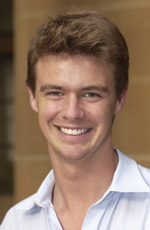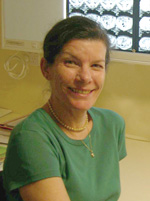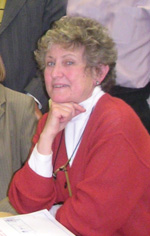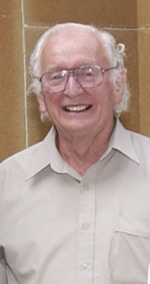The American Society for Bioethics and Humanities was established in 1998 to “promote the exchange of ideas and foster multidisciplinary, interdisciplinary, and interprofessional scholarship, research, teaching, policy development, professional development, and collegiality among people engaged in all of the endeavors related to clinical and academic bioethics and the health-related humanities.”1 The UK Association for Medical Humanities has defined the field as representing “a sustained interdisciplinary enquiry into aspects of medical practice, education and research expressly concerned with the human side of medicine”.2
In discussing medical humanities, it can be difficult to avoid emphasising, as the latter definition does, the idea of two opposed sides — the biomedical and the human. It is an opposition that translates too easily into stereotypes: science as cold, unfeeling, and sometimes dangerous, and the humanities as warm-hearted and well-intentioned, but possibly less “scientific”.
Both sides can be united if a shared approach is used to deepen our understanding of human health and wellbeing by calling on multiple perspectives — biomedical, philosophical, historical, artistic, literary, anthropological and sociological. The result of this approach should be a more insightful view of the patient, the doctor and the healthcare system, and an enhanced capacity to cure, relieve and comfort.
Medical humanities are “good” not only for their own sake, but also because they are instrumental in:
reducing the gap between biomedicine and the human sciences, such as philosophy, history, sociology and anthropology;3
facilitating interdisciplinary teaching and research;4
promoting a patient-centred approach to medical care;5
counteracting professional burnout;6
reducing biomedical hubris;7and
equipping doctors to meet moral challenges not “covered” by biomedicine.8
The arts, humanities and social sciences act as a counterbalance to the relentless reductionism of the biomedical sciences, which rely on knowledge that enhances the order and predictability of diagnosis, investigation and treatment. History, philosophy and sociology warn that the person with the disease is all too easily reduced to the non-hygienic, non-rational, disordered “other”. These are not abstract or outdated notions; we all see doctors who make it quite clear that patients are an irritating obstruction between themselves and the disease.
Biomedicine can do harm when it overlooks or marginalises particular individuals and groups. Once seen as a potential cure-all, biomedicine has limits and dangers that are now more clearly understood.9 The public reaction to this perceived danger is particularly well illustrated by the acceptance of non-evidence-based alternative medicine. This challenges the privileged status of biomedical science. It leads some doctors to despair in the face of public credulity and tempts others to abandon science and jump onto what may be a lucrative bandwagon. Paradoxically, it multiplies the potential for harm to patients,10,11 while illustrating that the real conceptual divide is not between medicine and the humanities but between science and non-science. The biomedical and social sciences are united in their commitment to scepticism and scholarship.
It is natural that medicine will attract students who are interested in the biomedical sciences, many of whom are particularly good at processing and memorising information. Unless they have adequate time for reflection, such students may ultimately adopt a dogmatic or overly technical approach to clinical practice, where every question has just one correct answer. They may fail to reflect on broader questions about the healthcare system or their place in it. Recent research into the psychological wellbeing of recent medical graduates found that rates of emotional exhaustion and depersonalisation rose significantly during the intern year, and that more than a third met criteria for psychiatric disturbance towards the end of internship.6
Examinations can reinforce a narrowed focus if they reward rote learning. While assessment can be used to encourage a deeper approach and promote reflective thinking,12 appropriate tools are difficult to develop and apply with a high level of reliability.13 However, if deep learning and reflection are not included in assessment, students will soon infer that these approaches are not really valued and will continue to focus on the examinations that “count”. Recognising critical reflection as a basis for self-directed lifelong learning has led some continuing professional development programs to incorporate requirements for reflection as part of learning.14 Linked to reflective practice are notions of self-awareness, “mindful practice”15 and greater insight into one’s own personal values and assumptions.
One approach to teaching medical humanities is via “narrative medicine”,16 with programs to promote “narrative competence”, a term that includes the capacity for empathic understanding, perceiving the significance of the patient’s and doctor’s metaphors, and being able to adopt multiple perspectives. Central to the approach is the belief that this shared understanding of the patient’s story is an intrinsic part of the therapy. Whether what it offers is actually new or even generally applicable remains to be demonstrated.17
Terms such as “reflective practice” and “narrative competence” can sound vague and irrelevant to the busy clinician, but they are brought into sharp focus by the recent implication of doctors in abuse of prisoners at Abu Ghraib in Iraq, through their alleged falsification of medical records to conceal torture and human rights violations.8
Medical education is only one of the many forces that shape doctors’ values. Nevertheless, one might ask: what kind of curriculum could offer the best preparation for times of psychological and moral duress? Biomedicine falls silent. What might the humanities offer?
History, sociology, literature and philosophy all have roles to play. The Stanford Prison experiment showed how easily research participants could be persuaded to mistreat simulated prisoners.18 Milgram’s famous study of obedience to authority showed that most participants obeyed orders to apply what they thought were dangerous electric shocks to innocent people.19 These examples demonstrate the ease with which unbridled power takes hold. The influence of time and context is demonstrated by histories of crime and punishment20 and by studies that delve into the nature of torture.21 If these seem too remote from medicine, a reminder on changing norms in medical research may drive the message home.22 Between 1932 and 1972, in Tuskegee, Alabama, doctors deliberately did not treat African American subjects with tertiary syphilis, purportedly to observe the natural history of the disease.22
Literary heroes can inspire, and philosophical concepts help to define, the nature of our shared humanity.23
Drawing back from the darkness at Abu Ghraib and Alabama to everyday medical practice, medical humanities remain an important subject. As a recent issue of the Journal made clear, doctors are generally experts in the art of delayed gratification and self-neglect,24 and bad at avoiding burnout.25 A broad range of interests and an encompassing world-view make for emotional and physical wellbeing.15
Medical humanities have become part of the mainstream in medical education in North America and in the United Kingdom. In 2003, the journal Academic Medicine reported on 41 programs in medical humanities in North America and internationally.26 The extent to which the humanities are integrated into each medical curriculum is highly variable, with some schools offering electives or options to a limited number of students. In the UK, following recommendations from the General Medical Council,27 “special studies modules” in medical humanities have become increasingly common, but not compulsory. Where the medical humanities are compulsory, they are sometimes delivered in discrete courses and at other times incorporated into strands in ethics and professionalism (some of which merge into areas as diverse as health policy and instruction in clinical skills). The explicit intention of many such programs is to promote a humane approach to patient care.28
In Australia, a number of broad changes in medical education have supported the incorporation of the humanities into medical curricula. New selection methods have increased student diversity,29 bringing more varied perspectives, while early clinical experience now brings students into contact with patients while they learn about disease mechanisms. Problem-based learning uses patient histories that encourage students to take a biopsychosocial rather than “disembodied” approach, even while studying the basic biomedical sciences. Curriculum strands or themes such as “The Doctor in Society” and “Personal and Professional Development” significantly broaden and deepen the curriculum.30 For example, following this approach, the graduate-entry program at the University of Sydney has produced graduates who feel well prepared for internship and who are rated highly by their supervisors, especially in clinical competence, confidence, communication and professional skills.31
At the University of Melbourne, study in the Medical Humanities Unit at the Centre for the Study of Health and Society is an option for the research year undertaken by all students who enter the medical course as school-leavers. The program includes undertaking four subjects in the Faculty of Arts, as well as submitting a research report. Other medical schools in Australia and New Zealand offer a variety of short courses in the medical humanities as options and electives, as well as core programs.32
The University of Sydney has established a collaborative relationship for teaching and research with the Centre for Arts and Humanities in Health and Medicine (CAHHM) at the University of Durham in the UK. The Centre was established in response to a national UK strategy, first sketched out in 1998 at a special Nuffield Trust conference “Humanities in medicine: beyond the millennium”. It is developing the humanities in the training of medical students and other health professionals, as well as building an evidence base for the effectiveness of the arts in healthcare.
Collaborators in Durham include philosopher Martyn Evans, Professor of Humanities in Medicine,33 and Dr Jane Macnaughton, a general practitioner and Director of CAHHM. Professor Evans was instrumental in setting up the only Master of Arts in Medical Humanities degree in the UK. Mature students in that program report similar challenges and benefits to the students in the Sydney program.34
- Jill Gordon1
- Faculty of Arts, University of Sydney, Sydney, NSW.
The Masters degree in Medical Humanities at the University of Sydney owes its inspiration to Associate Professor Joanne Finkelstein, Dean for Postgraduate Coursework in the Faculty of Arts. She recognised the possibilities offered by such a program, and initiated and fostered its development.
None identified.
- 1. American Society for Bioethics and Humanities. Purpose of the ASBH. Available at: www.asbh.org/about/purpose.htm (accessed Oct 2004).
- 2. Evans M, Arnott R, Bolton G, et al. The medical humanities as a field of enquiry. Statement from the Association for Medical Humanities. J Med Ethics 2001; 27: 104-105.
- 3. Snow C. The two cultures and the scientific revolution: the Rede Lecture 1959. Cambridge: Cambridge University Press, 1961.
- 4. Evans HM, Macnaughton J. Should medical humanities be a multidisciplinary or an interdisciplinary study? Med Humanit 2004; 30: 1-4.
- 5. Schneiderman L. Empathy and the literary imagination. Ann Intern Med 2002; 137: 627-629.
- 6. Willcock S, Daly M, Tennant C, Allard B. Burnout and psychiatric morbidity in new medical graduates. Med J Aust 2004; 181: 357-360. <MJA full text>
- 7. Illich I. Limits to medicine: medical nemesis, the expropriation of health. New York: Pantheon Books; 1976.
- 8. Miles S. Abu Ghraib: its legacy for military medicine. Lancet 2004; 364: 725-729.
- 9. World Health Organization. Scaling up response to infectious diseases: a way out of poverty. WHO Report. Geneva: WHO, 2002.
- 10. Gottlieb S. Chinese herb may cause cancer. BMJ 2000; 320: 1623A.
- 11. Ernst E, White A. Life-threatening adverse reactions after acupuncture? A systematic review. Pain 1997; 71: 123-126.
- 12. Schon D. Educating the reflective practitioner. San Francisco: Jossey-Bass, 1987.
- 13. Gordon J. Assessing students’ personal and professional development using portfolios and interviews. Med Educ 2003; 37: 335-340.
- 14. Campbell C. Study of the factors influencing the stimulus to learning recorded by physicians keeping a learning portfolio. J Contin Educ Health Prof 1999; 19: 16-24.
- 15. Epstein R. Mindful practice. JAMA 1999; 282: 833-839.
- 16. Charon R. Narrative medicine: a model for empathy, reflection, profession, and trust. JAMA 2001; 286: 1897-1902.
- 17. Strawson G. Tales of the unexpected. The Guardian 2004; 10 January: 7, 10.
- 18. Haney C, Banks W, Zimbardo P. Interpersonal dynamics in a simulated prison. Int J Criminol Penol 1973; 1: 69-97.
- 19. Milgram S. Behavioral study of obedience. J Abnorm Soc Psychol 1963; 67: 371-378.
- 20. Hibbert C. The roots of evil: a social history of crime and punishment. Stroud: Sutton Publishing, 2003.
- 21. Conroy J. Unspeakable acts, ordinary people: the dynamics of torture. Berkeley: University of California Press, 2001.
- 22. Jones J. Bad blood: the Tuskegee syphilis experiment. New York: Free Press, 1993.
- 23. Gaita R. A common humanity: thinking about love and truth and justice. London: Routledge, 2000.
- 24. Shadbolt N. Attitudes to healthcare and self-care among junior medical officers: a preliminary report. Med J Aust 2002; 177 (1 Suppl): S19-S20. <MJA full text>
- 25. Schattner P, Davidson S, Serry N. Doctors’ health and wellbeing: taking up the challenge in Australia. Med J Aust 2004; 181: 348-349. <MJA full text>
- 26. Dittrich L. The humanities and medicine: reports of 41 US, Canadian and international programs [preface]. Acad Med 2003; 78: 951-952.
- 27. General Medical Council. Tomorrow’s doctors: recommendations on undergraduate medical education. London: GMC, 1993.
- 28. Association of American Medical Colleges. Innovation in medical education: the arts as a teacher. Available at: www.aamc.org/newsroom/reporter/august03/innovations.htm (accessed Oct 2004).
- 29. Powis D. How to do it — select medical students. BMJ 1998; 317: 1149-1150.
- 30. Gordon J. Fostering students’ personal and professional development in medicine: a new framework for PPD. Med Educ 2003; 37: 341-349.
- 31. Dean S, Barratt A, Hendry G, Lyon P. Preparedness for hospital practice among graduates of a problem-based, graduate-entry medical program. Med J Aust 2003; 178: 163-166. <MJA full text>
- 32. Gordon J. Report to the Committee of Deans of Australian Medical Schools: Conference on Medicine and the Humanities; Sydney, NSW; 5-6 Nov 2004.
- 33. Evans M. Is medicine a “cultural good”? Med J Aust 2005; 182: 3-4.<eMJA full text>
- 34. Evans M, Greaves D. Medical humanities at the University of Wales Swansea. Med Humanit 2001; 27: 51-52.









Abstract
The medical humanities are concerned with “the science of the human”, and bring the perspectives of disciplines such as history, philosophy, literature, art and music to understanding health, illness and medicine.
The medical humanities are designed to overcome the separation of clinical care from the “human sciences” and to foster interdisciplinary teaching and research to optimise patient care.
Medical humanities have become part of the mainstream in medical education in North America and the United Kingdom, and are now integrated into many medical curricula in Australia.
The Australasian Association for Medical Humanities was inaugurated in November 2004; a postgraduate program in the medical humanities began at the University of Sydney in 2003.